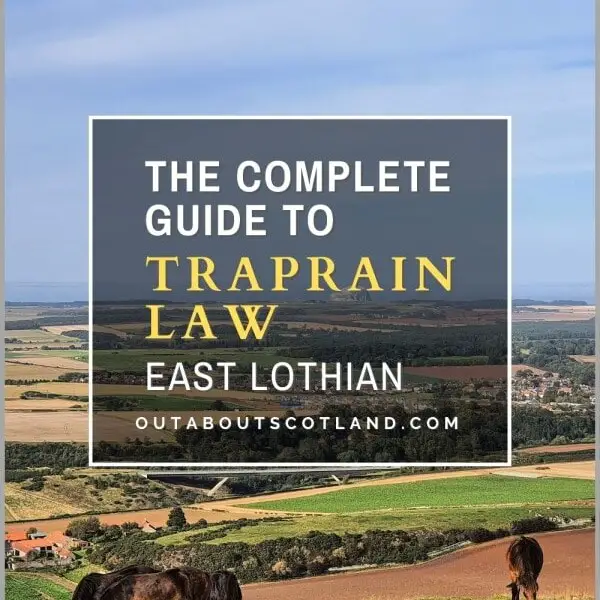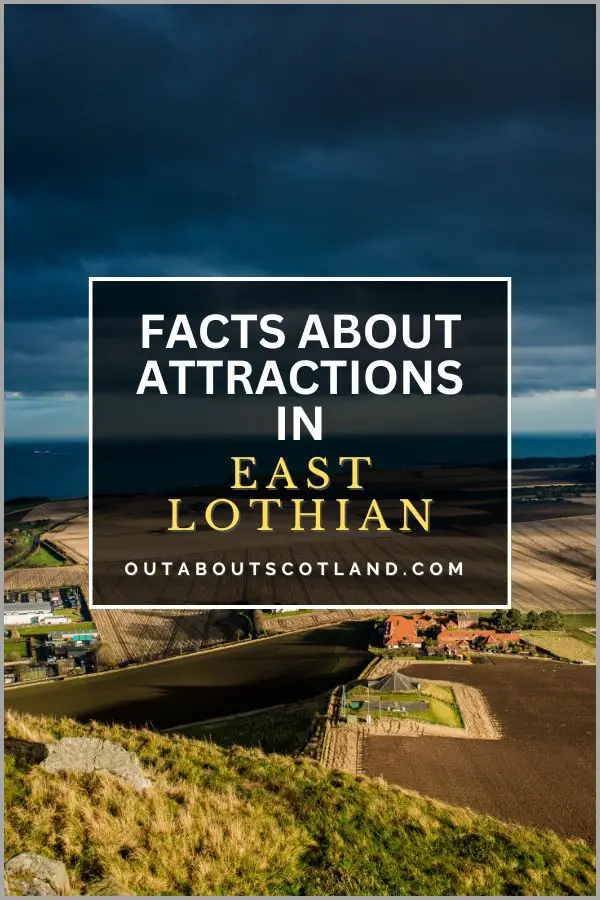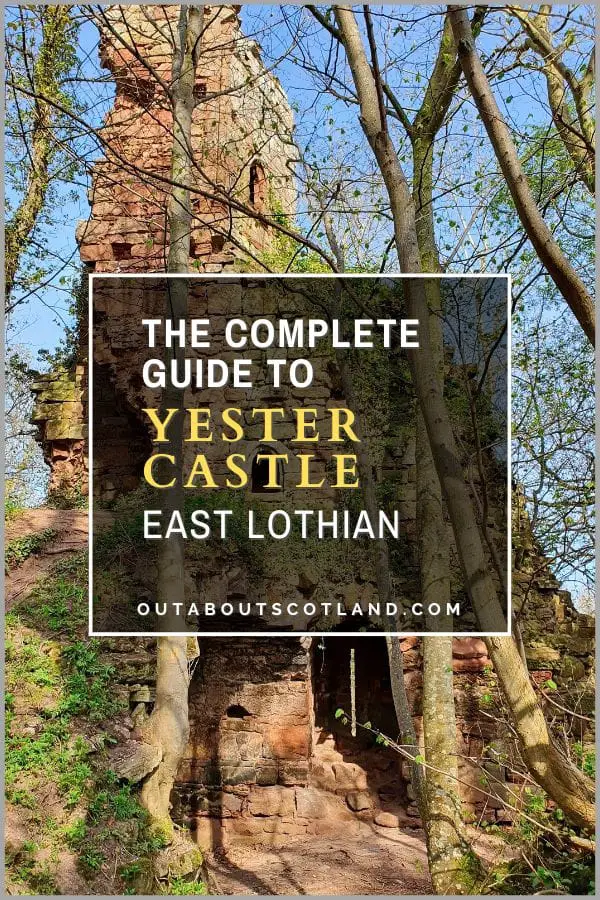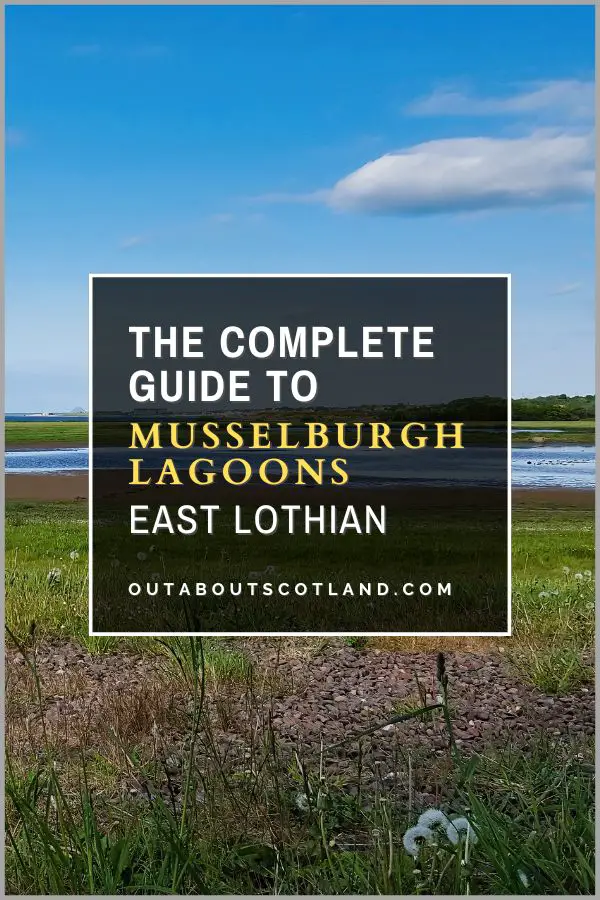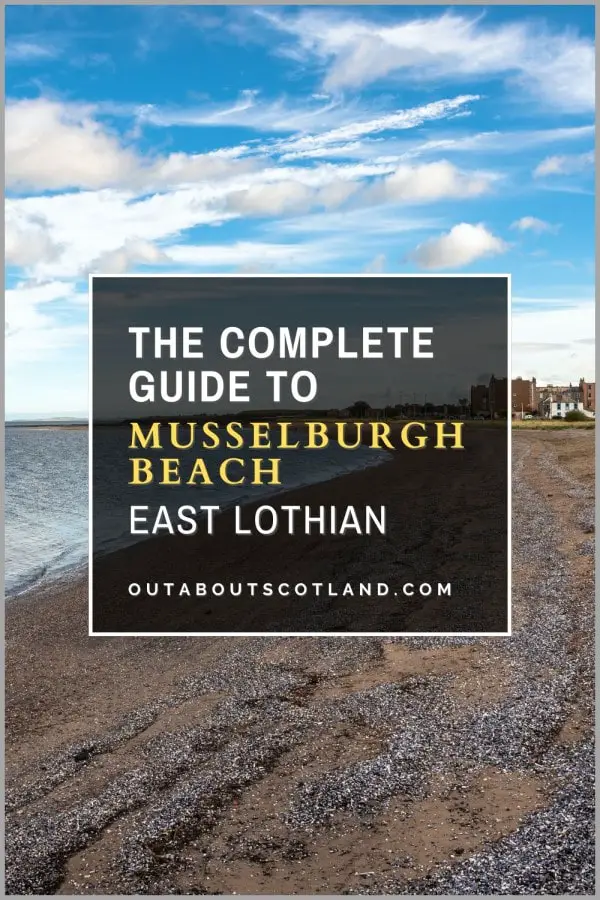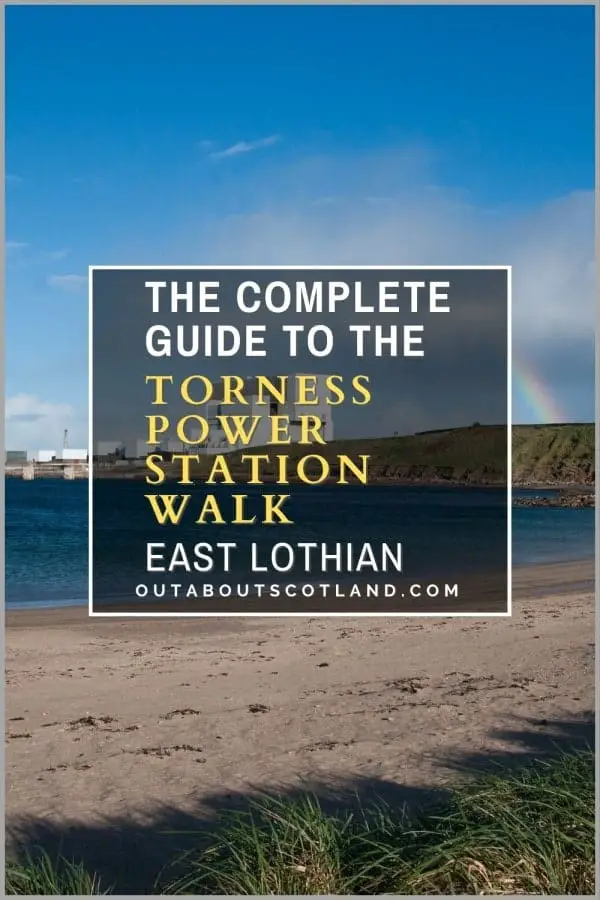Whether you’re a history buff or simply love exploring the great outdoors, Traprain Law in East Lothian is a must-visit destination. Located 20 miles east of Edinburgh, Traprain Law is a hill that rises 221 metres (724 feet) above sea level, offering panoramic views of the surrounding countryside.
For centuries, this hill was a critically important site for the ancient people who lived in the area. In the Iron Age it was the location of a major hillfort, and later in the 1st century AD it became the capital of the powerful Votadini tribe. Today, it’s a popular place for visitors to enjoy walks as well as soak up the picturesque scenery of this often-missed corner of Scotland.
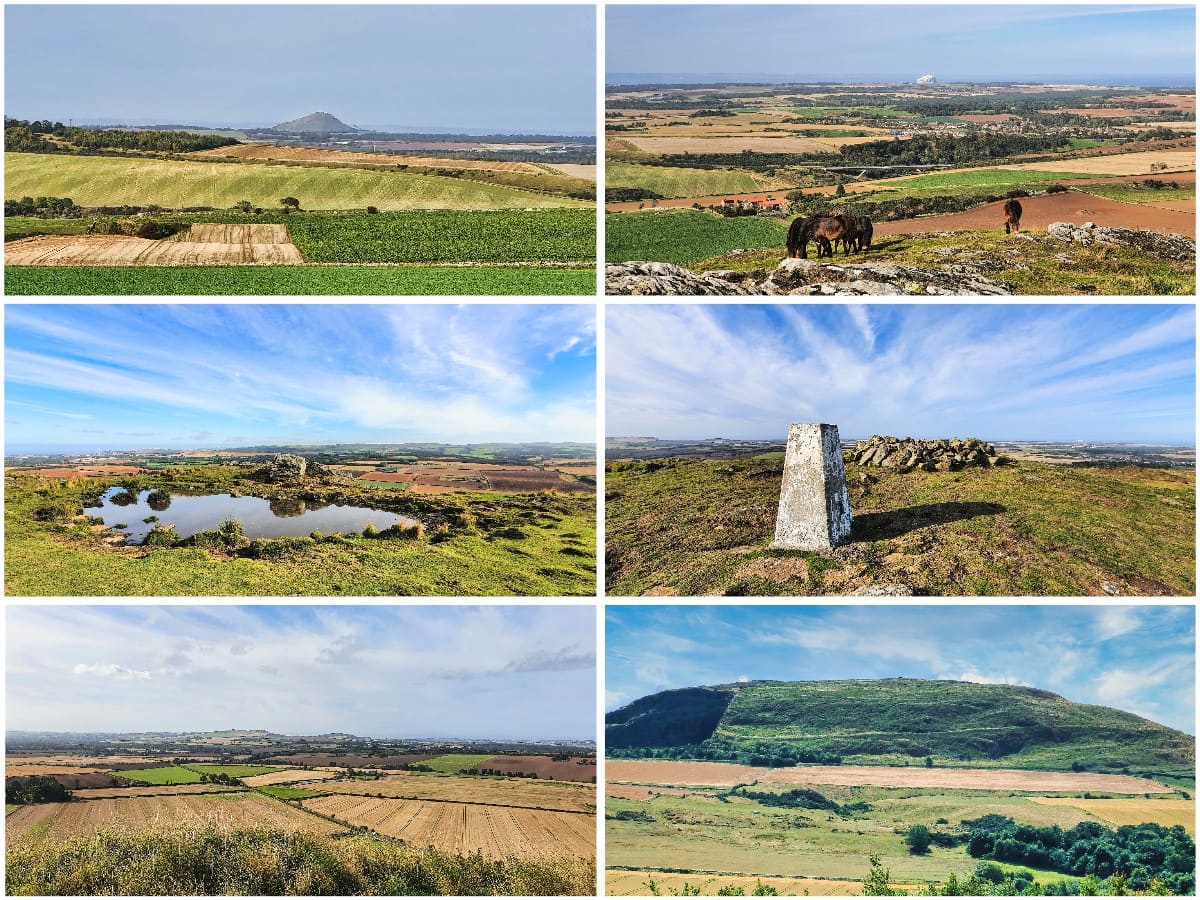
| Address: | Haddington, EH41 4PY |
| Opening Hours: | Traprain Law is accessible 24/7, 365 days a year. |
| Admission Price: | There is no fee to visit Traprain Law. |
| Parking: | There is a free dedicated parking area for approx 7 cars midway along the road that runs alongside Traprain Law. |
| Contact: | NA |
| Facilities: | Car park, bike lock points, information panels, picnic benches. The nearest shops are in East Linton. |
Overview
East Lothian has a surprising number of unusual tourist attractions, and this hill set deep within the heart of the county is no exception. Traprain Law rises 724 feet above sea level in a landscape that is unusually flat for Scotland. To the north is the mouth of the Firth of Forth, and to the south are the Lammermuir Hills, so visitors who make their way to the summit are rewarded with a stunning panorama from every direction.
Though much flatter in shape than the conical Berwick Law which lies 6 miles to the north, Traprain Law is, in fact, another remnant of a volcano.
In legend, the hill was the cliff where St. Mungo’s mother was thrown after her father discovered she was pregnant. She miraculously survived the fall and managed to cross the Firth of Forth to land at Culross where she gave birth to Kentigern, who would later findthe church that became Glasgow Cathedral.
The Votadini, one of Scotland’s most powerful tribes, established their capital on the hill, building a massive fort there that covered more than 30 acres and had a nearly mile-long turf rampart surrounding it. The Votadini’s descendants, the Gododdin, later moved west to findthe first settlement in Edinburgh, so this otherwise unassuming hill has quite a history associated with it.
Another interesting fact about the hill is that it was the excavation site of one of the largest hoards of Roman silver ever discovered. The Traprain Law treasure was unearthed in 1919 when over 23kg of silverware was found during excavation works.
The find included silver pots, spoons, platters, and bowls, as well as several mirrors and silver coins. The hoard was restored in Edinburgh and is now on display in the National Museum of Scotland.
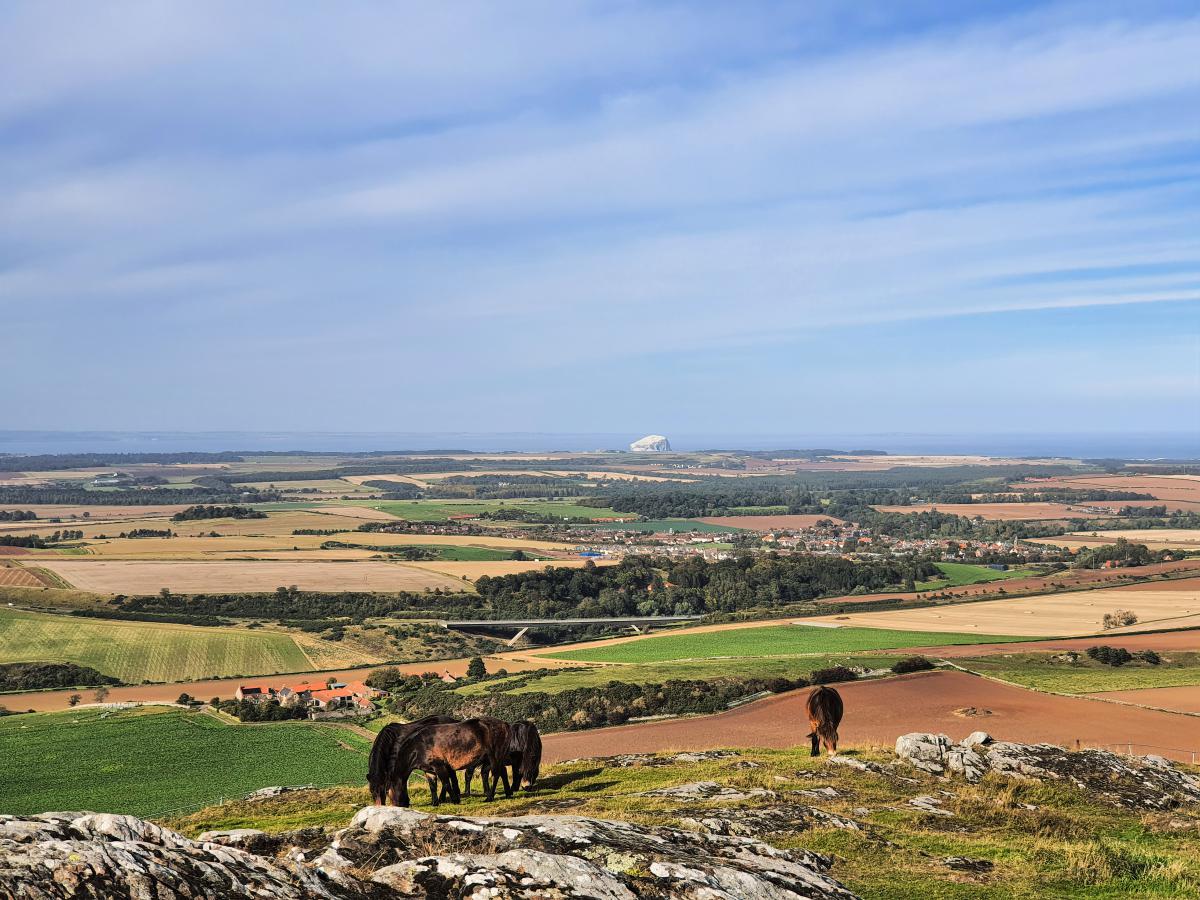
The Highlights
1: This hill isn’t exactly in the league of Ben Nevis, but it’s still worth strapping your hiking boots on for (link to my walking boot reviews). The views from the top are fantastic and are just as good as the view you’ll find from the much higher North Berwick Law.
2: The location of this hill means it’s easy to include a visit with other East Lothian attractions in the local area such as Hailes Castle and Preston Mill, or maybe Dunbar Harbour and Belhaven Beach.
3: The wild ponies on Traprain Law are a wee tourist attraction in their own right and make for a fantastic photo opportunity.
Visiting Tips
1: If the ponies are on the hill when you arrive please resist the urge to feed them as too much food will reduce the amount of grass they eat which increases the risk of wildfires.
2: The car park at the entrance to the path that winds its way up the hill isn’t particularly big, but there’s a grass verge on the other side of the road that has space for another five cars.
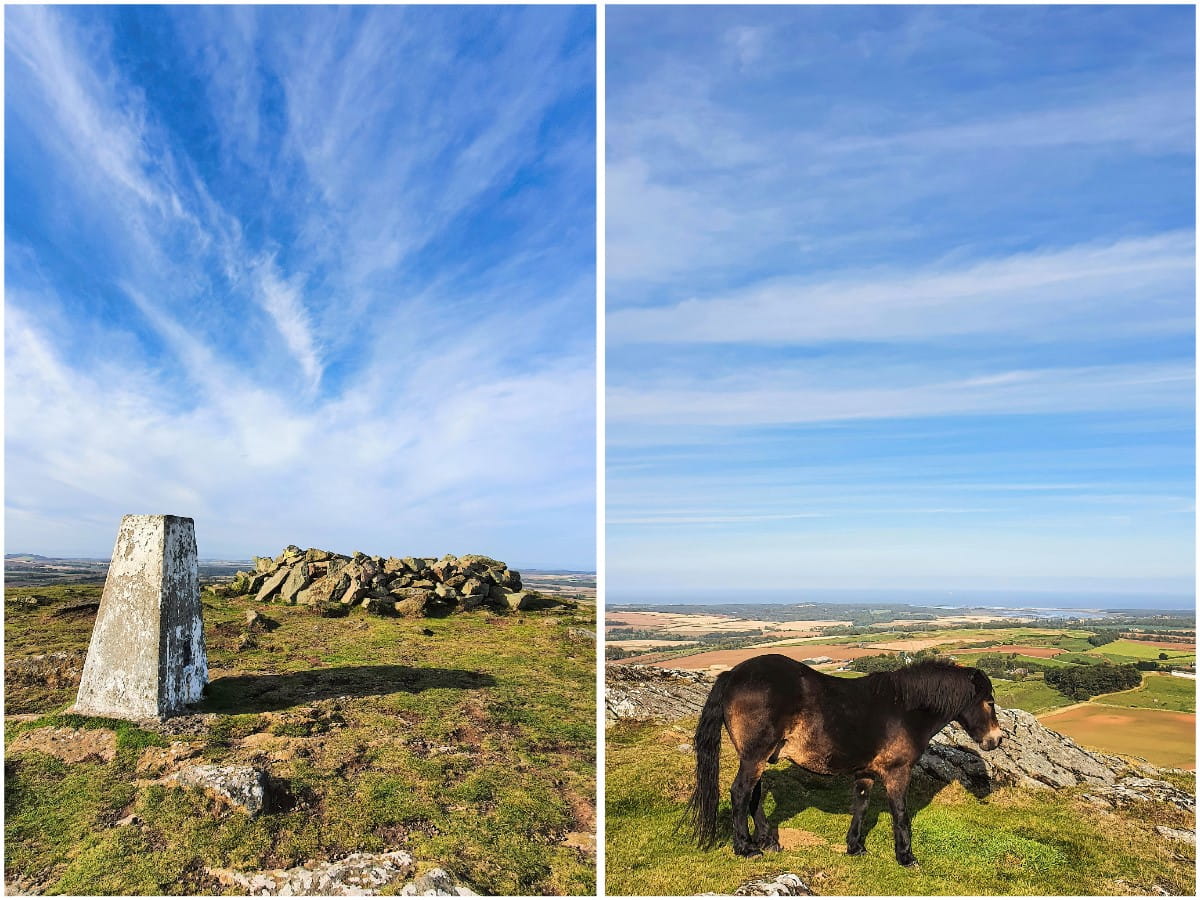
Tourist Information
Aside from its history, Traprain Law is a popular destination due to the views it offers from its summit. At around one mile in total length, the circular walk to the top and back to the car park shouldn’t take more than an hour to complete, but it’s certainly worth doing if you’re in the area and looking for a breath of fresh air.
To get there, drive to the A1, take the turning onto the A199 from either Haddington or Dunbar (depending on the direction of travel), and continue towards East Linton. You’ll then see a brown tourist sign pointing to Traprain Law, which is situated 2 miles to the south and is pretty much impossible to miss as it dominates the otherwise flat landscape.
Once at the Traprain Law car park, you’ll find some information boards that explain the site’s history and a rough grass track that winds its way along the lower edge of the hill before doubling back on itself to the summit, which is marked by a cairn and a triangular point.
On a sunny day, it’s a magical place, so you might consider taking a picnic or at least a pair of binoculars (link to my binocular reviews). While up there, you’ll probably find yourself sharing the view with a herd of Exmoor ponies who were introduced to control the long grasses that were the cause of several summertime wildfires.
Picnic stop over, you can either return to the car park the same way you went up, or follow the path to the east around the remains of the old Traprain Law quarry and then back to the car park via the path near the road.
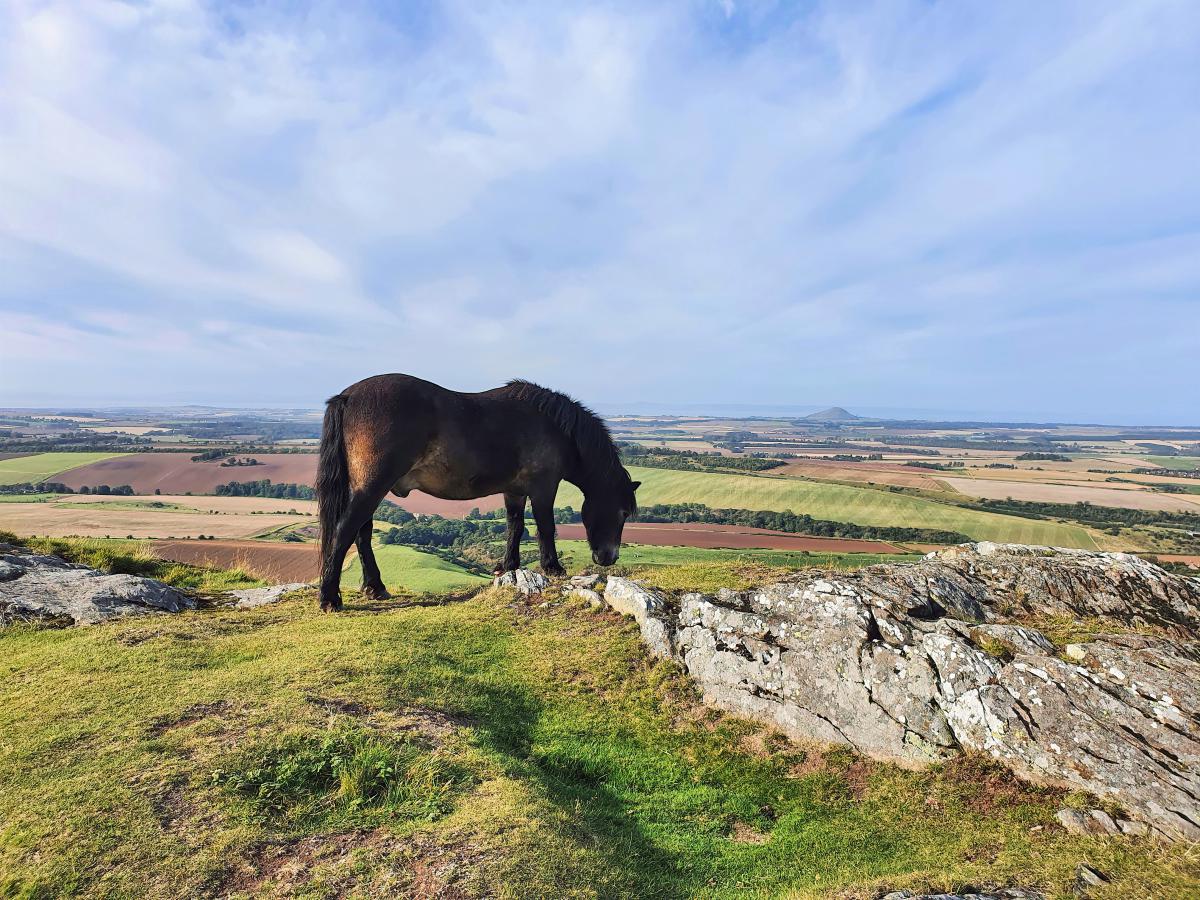
Things to Do
Walking: Traprain Law provides a great opportunity for walking as a family. The trail to the top isn’t very long or steep and it’s suitable for all age groups, though visitors should note that in winter it’s rather muddy. The top of the hill offers fantastic panoramic views of East Lothian.
Photography: If you are a photography lover, this place is a paradise for you. You can capture stunning views across East Lothian’s countryside with the twinkling waters of the North Sea framing the background. For the best shots, visit during the late evening or early morning when the sun is low.
Bird Watching: The summit of Traprain Law is a great spot to sit with a pair of binoculars (link to binocular reviews). With some patience, you’ll soon identify a variety of birds from gulls and gannets to buzzards. It’s a perfect place to relax and connect with nature.
Picnicking: Pack a picnic and enjoy it at the top of the Law (I suggest only doing this in the summer when the ground will be dry). The views over East Lothian and the Firth of Forth make it a truly memorable place to have lunch.
History Exploration: Traprain Law has a rich history dating back to Iron Age and it was the site of the largest hoard of Roman silver ever found outside of the Roman Empire. If you have kids, tell them about the riches they might discover and let them loose with a metal detector.
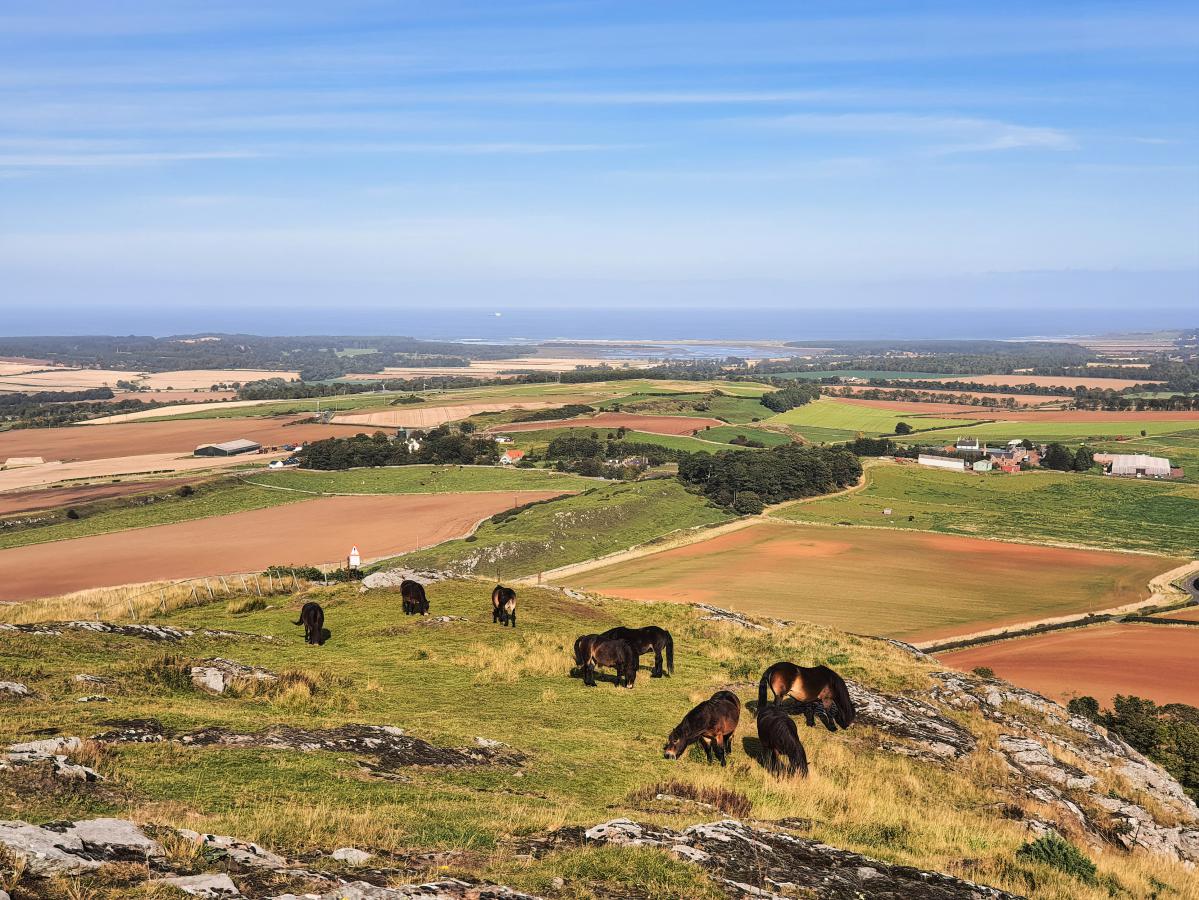
Things to Do Nearby
Athelstaneford National Flag Centre. North Berwick, EH39 5BE. 12-minute drive.
Athelstaneford is a small parish village in East Lothian, around 7 miles from North Berwick that legend says is the place where a Scottish King founded the Saltire national flag after seeing it pictured in a cloud formation. There is a small museum dedicated to the saltire behind the church, and there is a popular walking trail nearby that heads through farmland.
Preston Mill and Phantassie Doocot. Preston Road, East Linton EH40 3DS. 8-minute drive.
An attractive historic mill that was used to produce flour and a unique 16th-century dovecot that was used to house over 500 pigeons. The mill is open for public viewing, but the main attraction for many visitors is the nearby River Tyne, which is a haven for otters, kingfishers, and herons. There are footpaths that follow the river for several miles.
Hailes Castle. Haddington, EH41 4PY. 6-minute drive.
A partially ruined castle that dates from the 14th century. The castle sits on the banks of the River Tyne near the village of East Linton in East Lothian. The site is unmanned, and entry to the castle is free.
The National Museum of Flight. East Fortune Airfield, B1347, North Berwick, EH39 5LF. 13-minute drive.
Scotland’s premier museum celebrates aviation in all its forms, from planes to balloons. The museum is situated in a disused airfield, and the exhibits are presented in two aircraft hangars and on the surrounding grounds. There is a café and a gift shop on site.
East Links Family Park. East Links Family Park, Dunbar EH42 1XF. 11-minute drive.
A family-friendly visitor attraction that is aimed at children with a collection of animal enclosures, a petting zoo, go-karts, a bouncy castle and trampolines, a large multi-activity fort and much more. There is a café and a gift shop on site, and visitors can easily extend their visit with a walk to the beautiful John Muir Country Park.
Frequently Asked Questions
How long does it take to climb Traprain law?
Traprain Law stands at a height of 221 meters (724 feet) above sea level and is a popular destination for hikers and walkers. The time it takes to climb the hill depends on a variety of factors such as your level of fitness, the route you choose, and the weather conditions.
If you’re an experienced hiker with a good level of fitness you can expect to reach the summit of Traprain Law in about 30 minutes. However, if you’re a beginner or have a lower level of fitness, it could take around 45 minutes.
What is Traprain Law’s geology?
Traprain Law is composed mainly of volcanic rock that was formed when magma hardened within a vent. The rock type found at Traprain Law is known as phonolite which is rich in low silica feldspathoid minerals.
Phonolite is widely distributed across the globe, particularly in Europe. The rock is resistant to weathering which has helped Traprain Law to retain its distinctive shape over millions of years.
Was Traprain Law a volcano?
Traprain Law in East Lothian, Scotland, is the remnant of an extinct volcano that is believed to have last erupted around 350 million years ago during the Carboniferous period. It is a volcanic formation known as a laccolith, and through time, ice has sculpted it to give it the peculiar profile that it has today.
What is the history of the Trapain Law?
The hill that is now known as Traprain Law was first inhabited during the Bronze Age, roughly around 1500 BC. It is known that bronze tools were made there, although it’s uncertain if it was permanently occupied at that time or only useda temporary settlement.
In later years, Traprain Law was the seat of power for a tribe known as the Votadini, who ruled over a significant portion of the region that is now known as south-east Scotland.
Their fortifications on the hill were improved just before the Roman invasion of Scotland in the year AD 80, but they eventually became subjects of the Romans and assisted them throughout their conquest of southern Scotland.
In the following centuries, the Votani’s descendants, the Gododdin, abandoned Traprain Law to found a fort on Castle Rock to the west, which eventually became the location of Edinburgh Castle.

